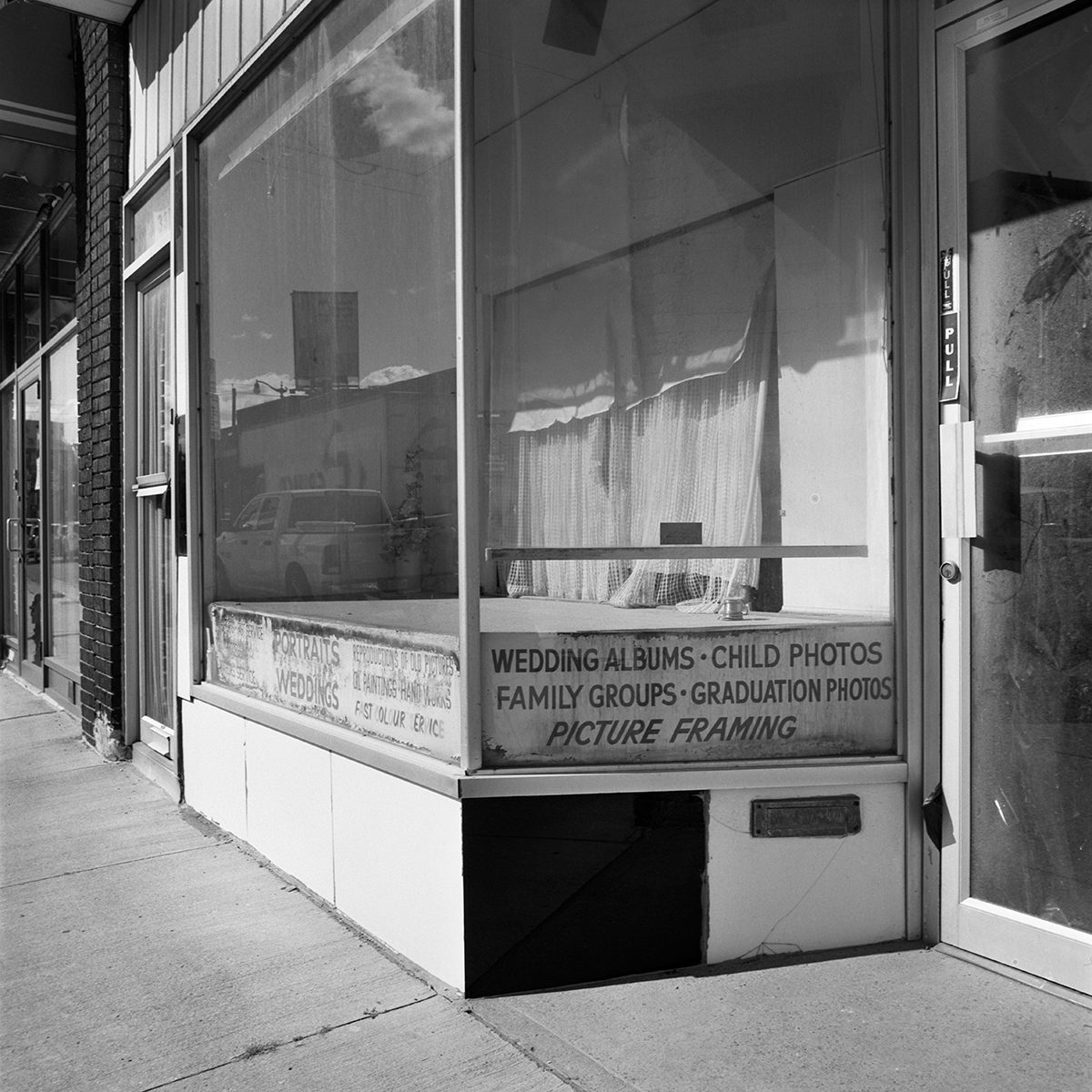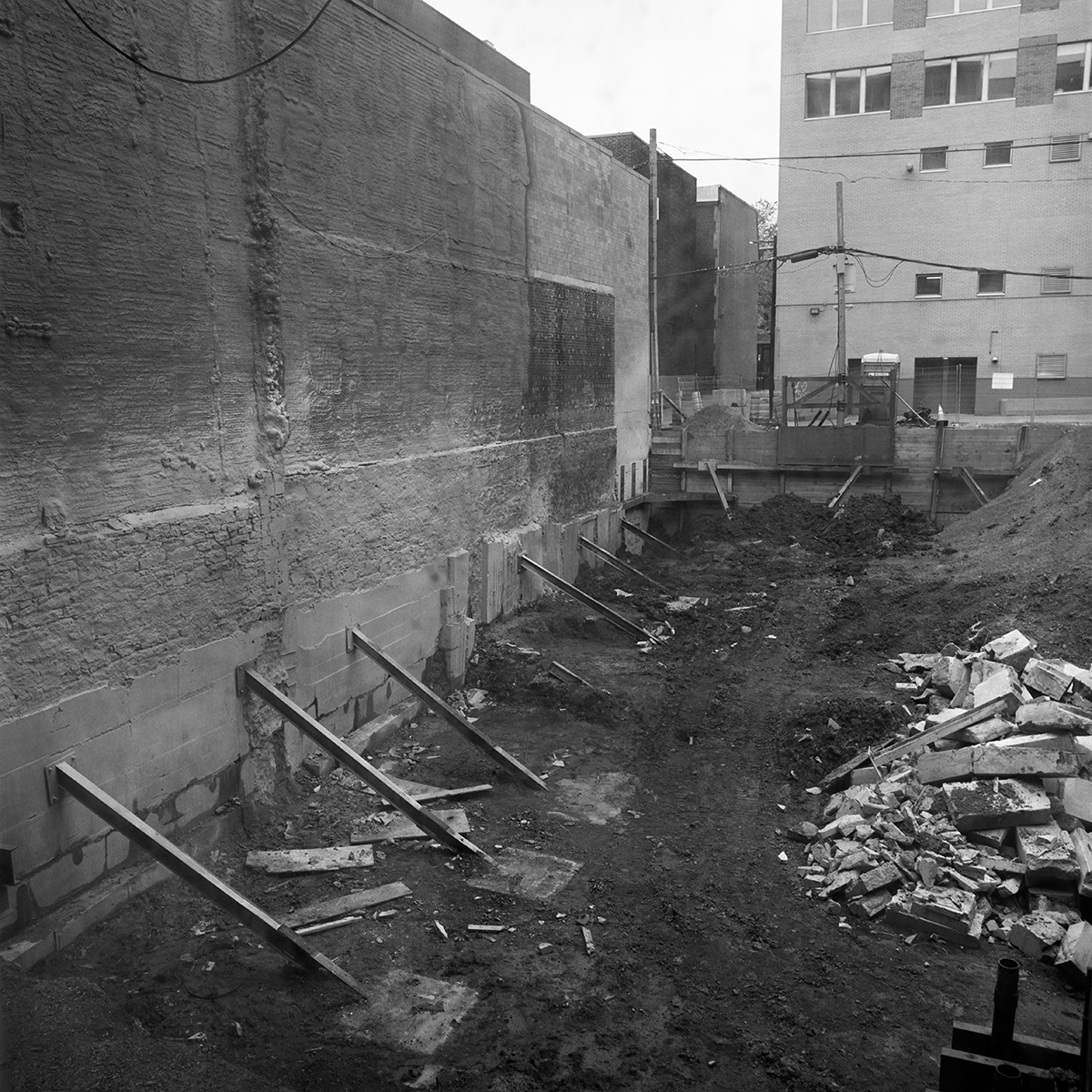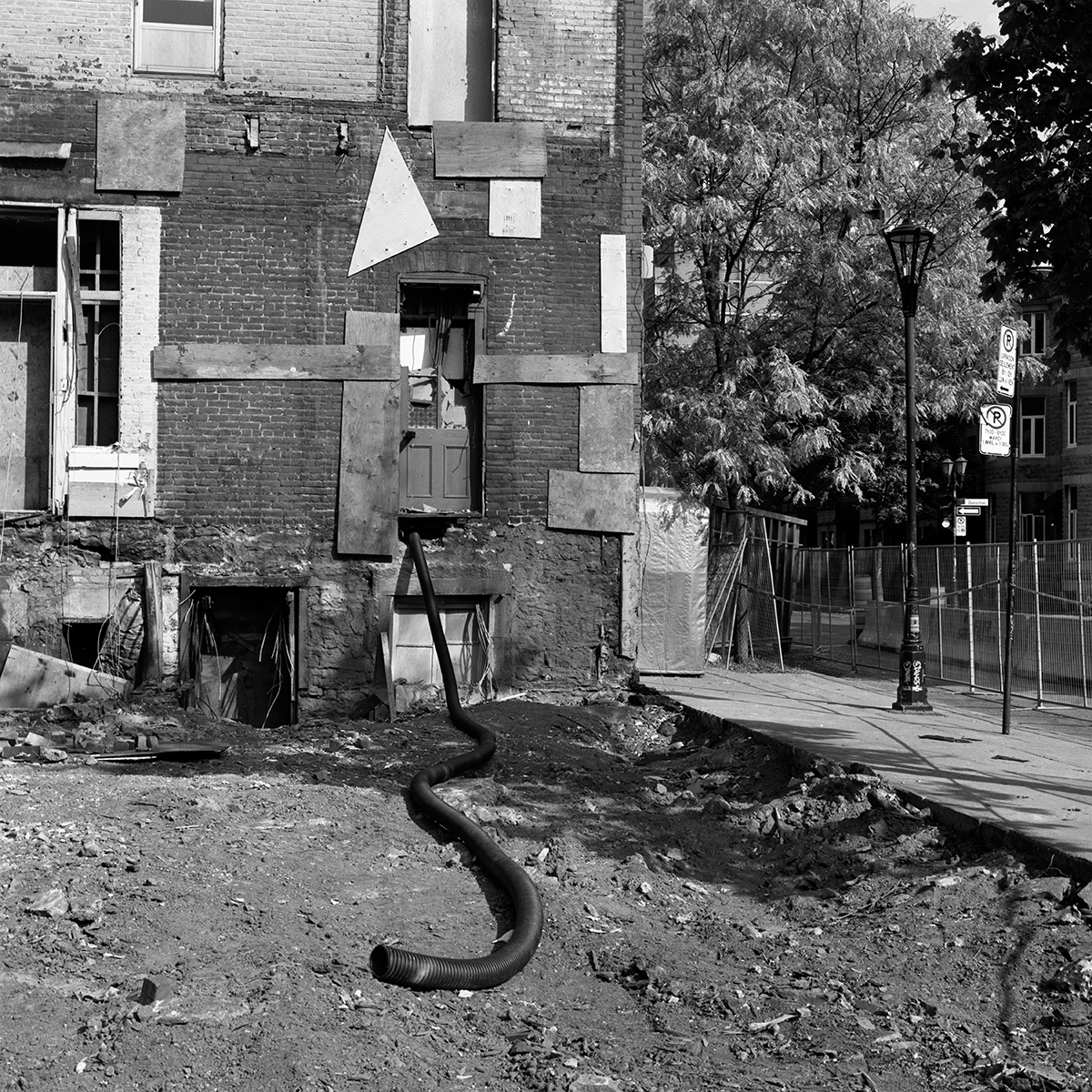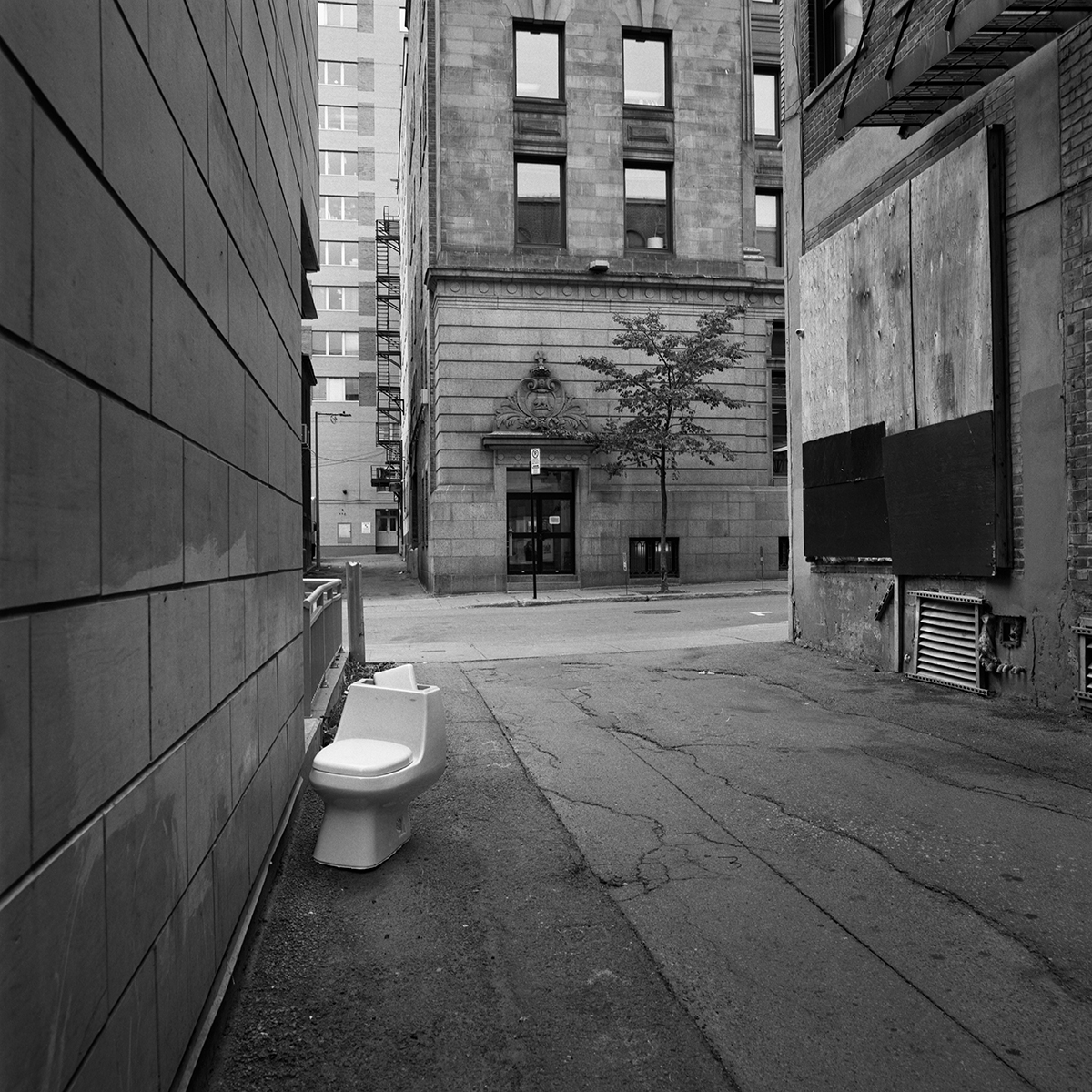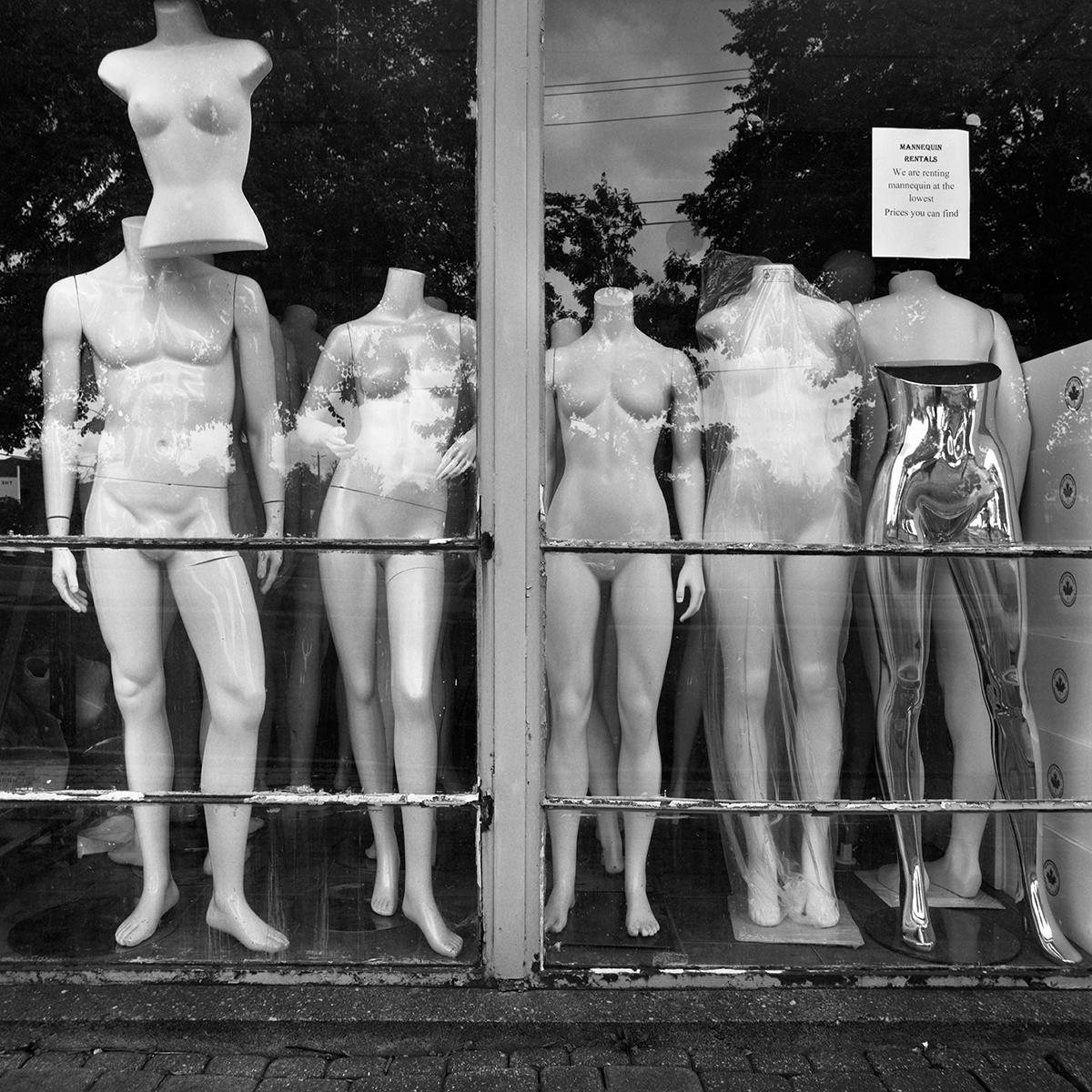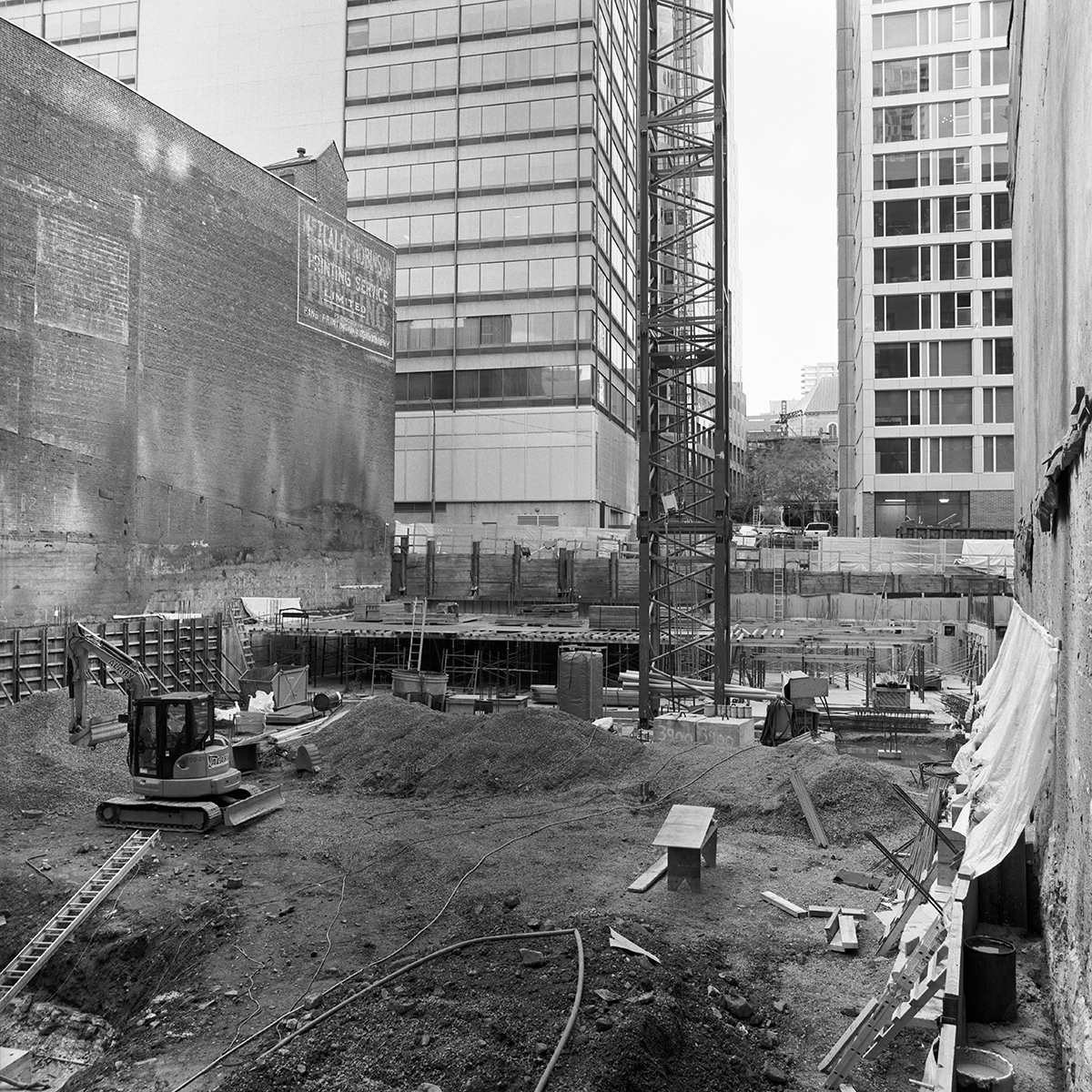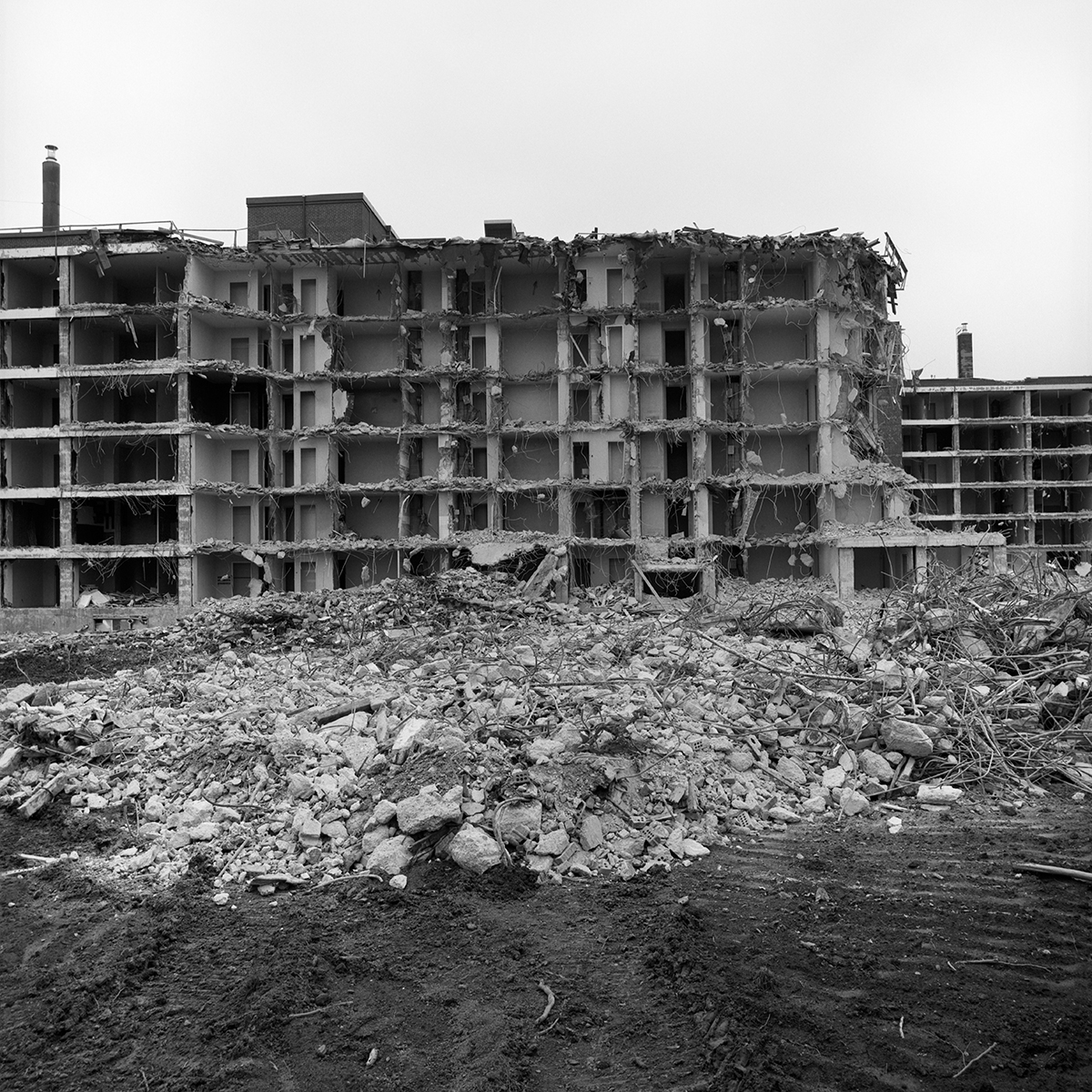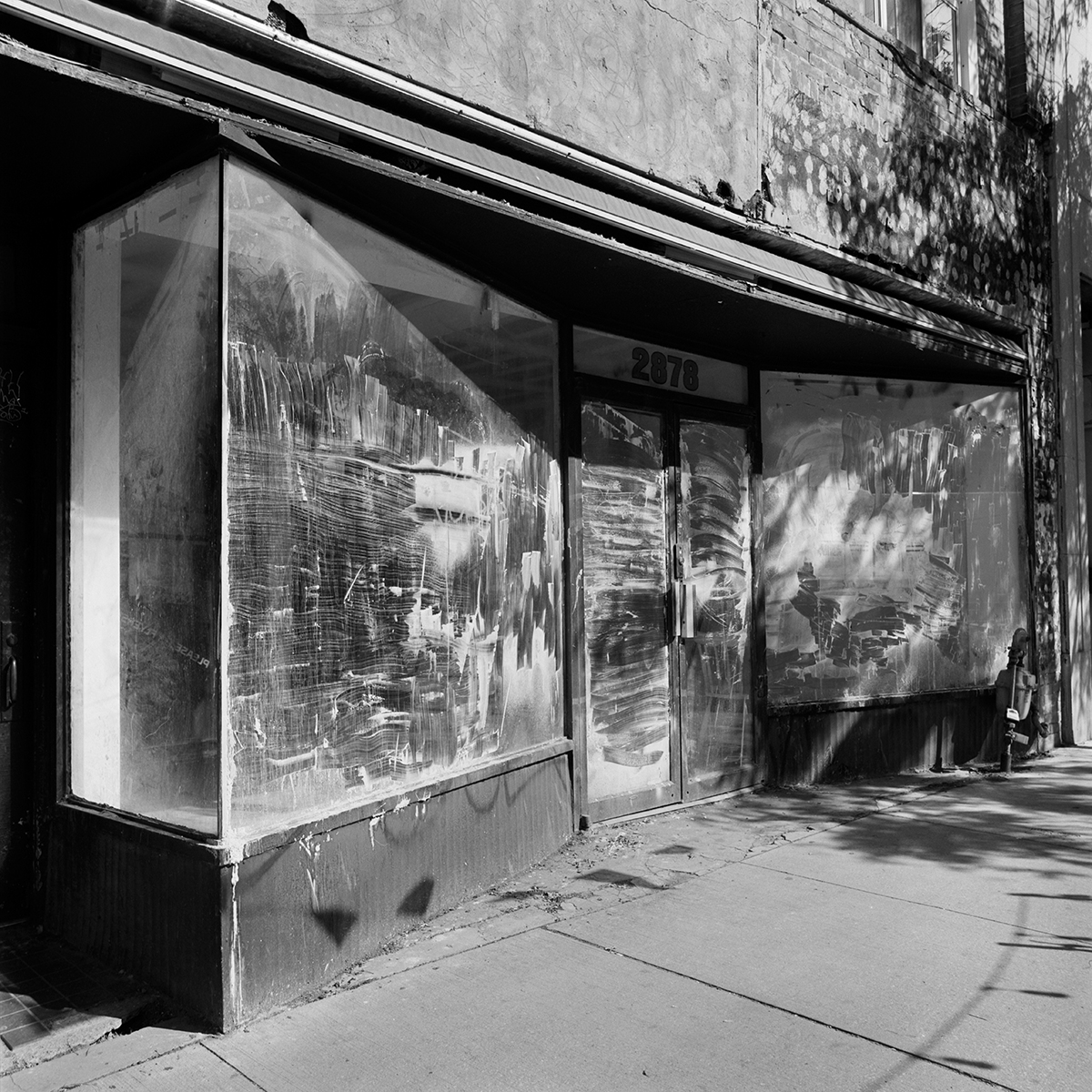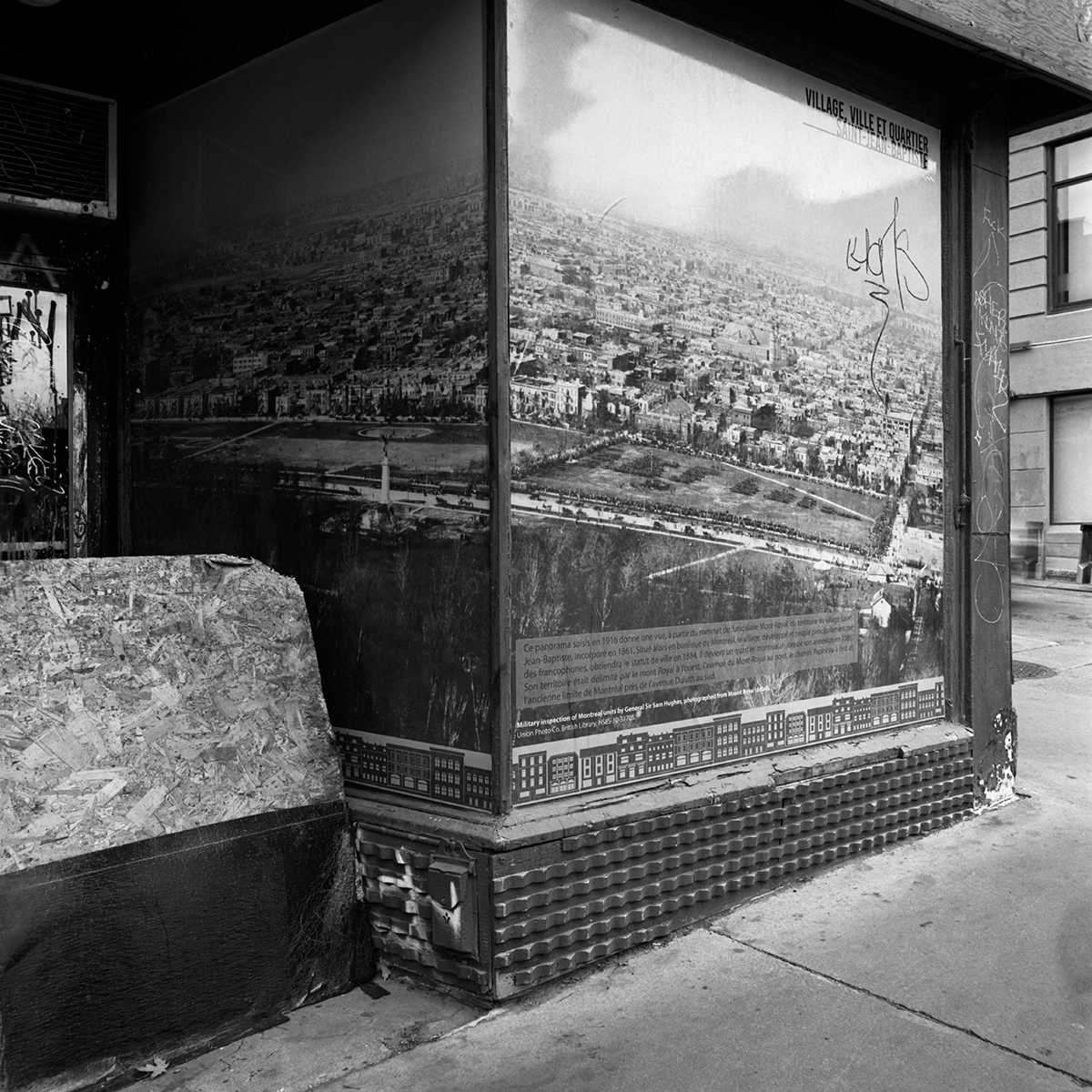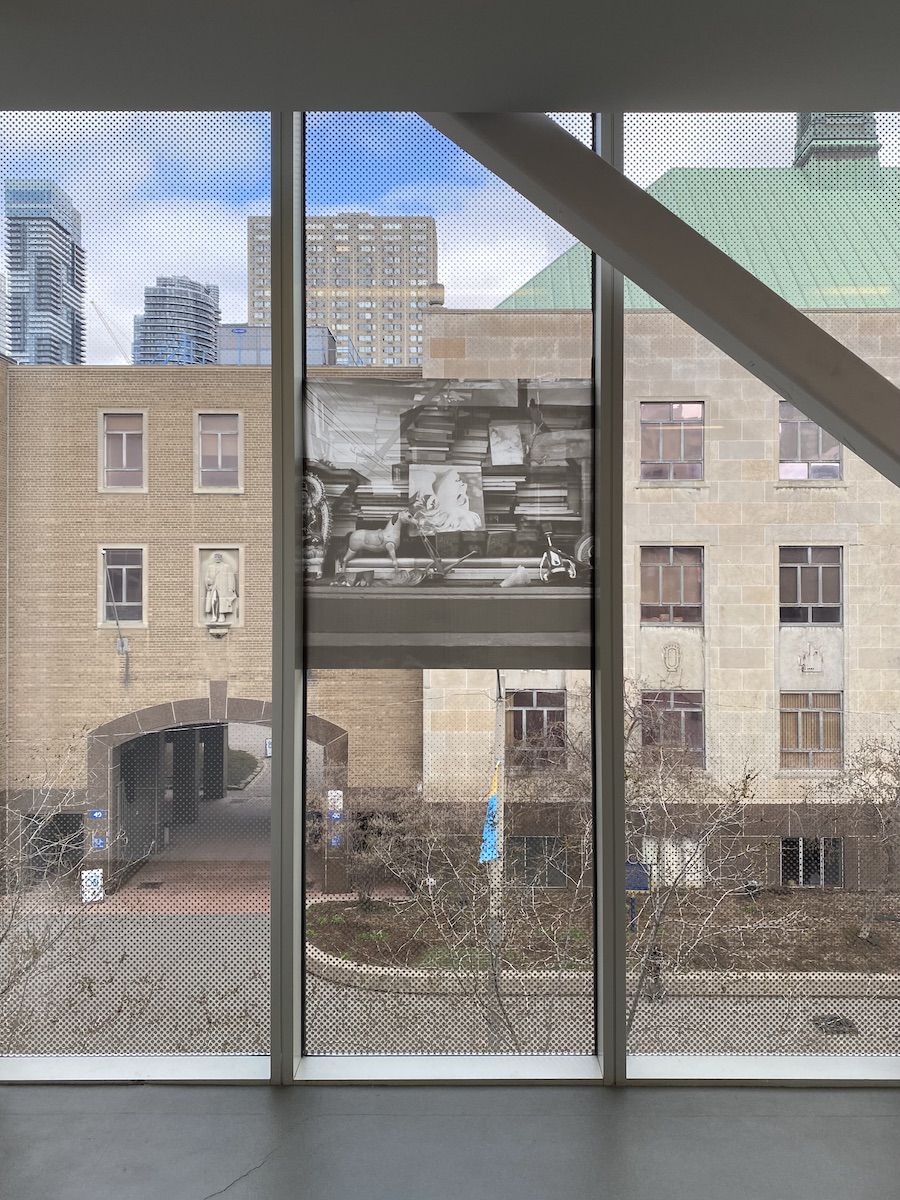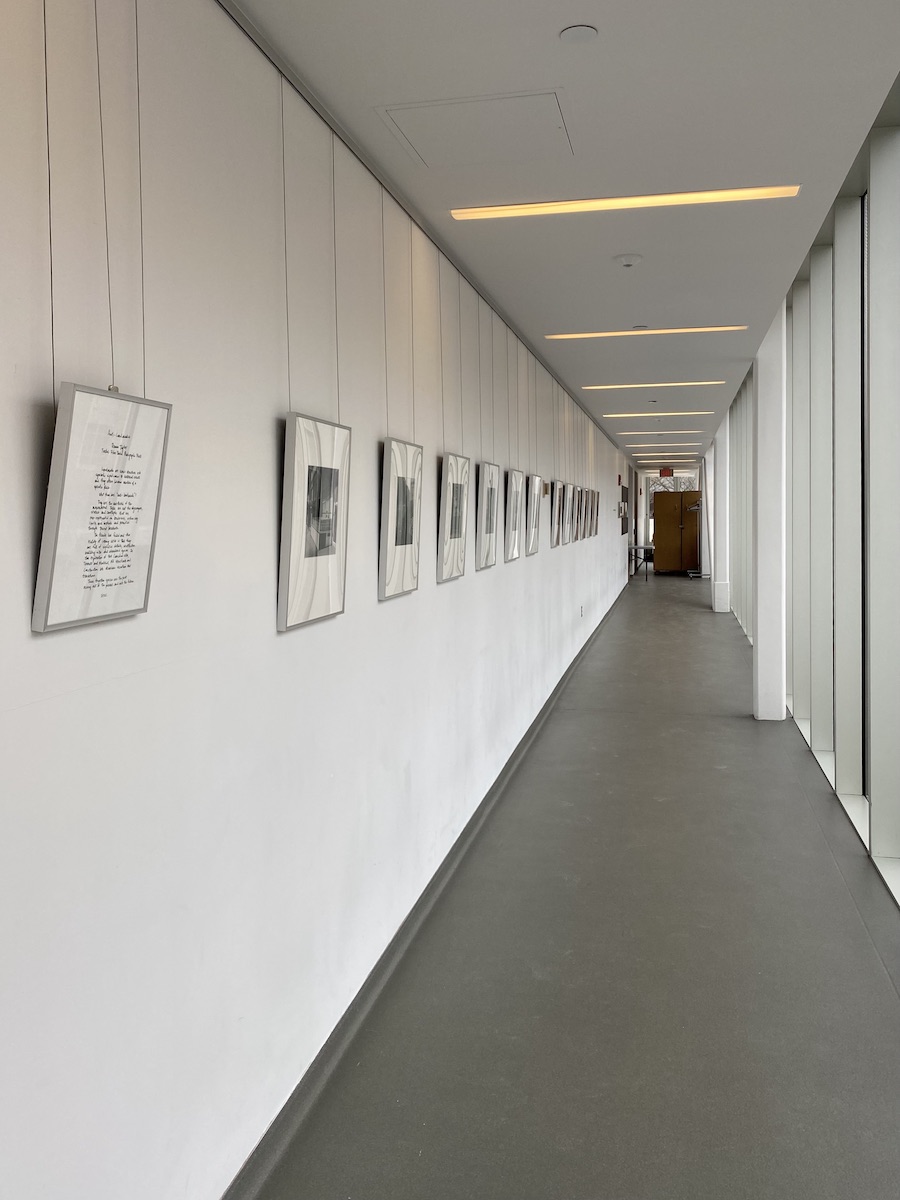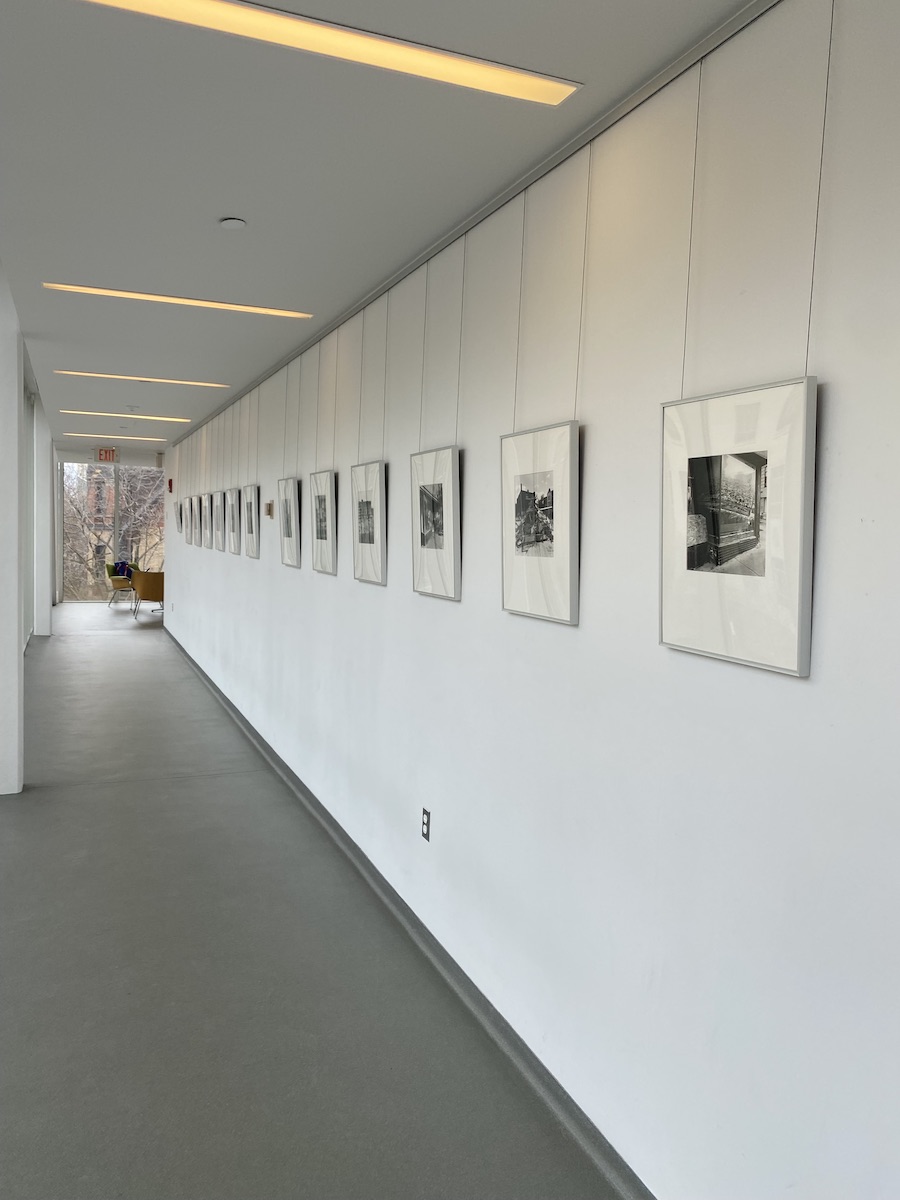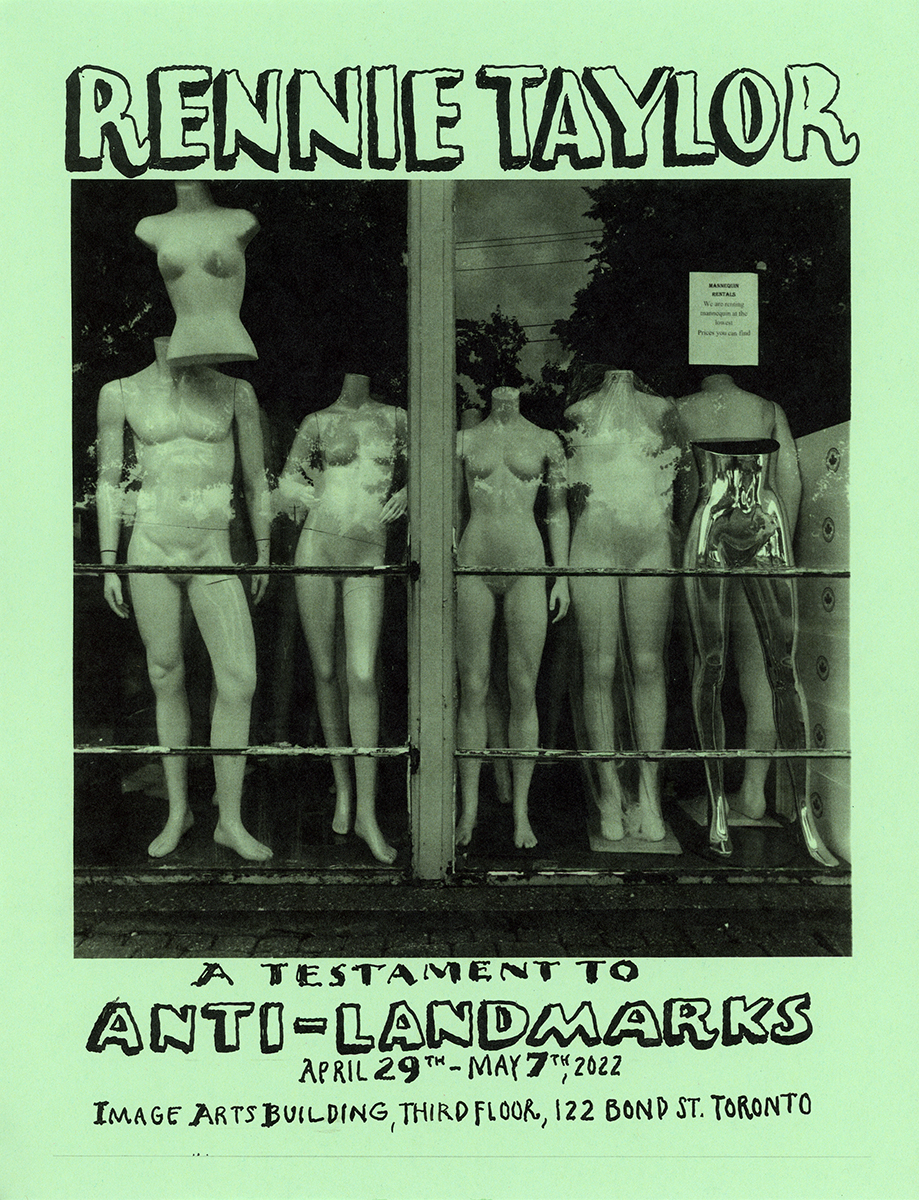Landmarks are iconic structures with symbolic significance to historical events and they often become markers of a specific place. What then are “anti-landmarks”? They are the antithesis of the monumental. These are not the skyscrapers, statues and cenotaphs that are overrepresented on boulevards, within city limits and archives and promoted through tourist brochures. The facade has faded and the reality of seeing cities is that they are full of neglected details, unattractive building sites and abandoned spaces. In this exploration of two Canadian cities, Toronto and Montréal, old storefronts and construction lots showcase uncertain new transitions. These forgotten spaces are the past moving out of the present and into the future.
This series is a counter-narrative to contemporary urban environments. Condominiums are endorsed as a housing solution for growing cities, yet they are poorly designed with future major ecological, environmental and longevity concerns. The ongoing environmental issue of increased carbon emissions through construction1 is rarely, if ever, discussed in new developments. Gentrification, as a by-product of urban growth, has displaced communities and homogenized areas of cultural and historical value. As well, this series touches on nostalgia.
Nostalgia, as the cultural theorist Svetlana Boym argues, can be separated into two distinct typologies. There is the restorative, deemed as a negative classification, that disguises itself as an objective truth in the search of a home long past. Then there is reflective nostalgia, a positive classification, that embraces the contradictions of belonging within modernity. Anti-Landmarks has elements of both these typologies. Within the images of storefronts, we see a yearning for the olden days while in the active construction sites we view the present represented now as the past.
The presentation of the photographs, through black and white fibre-based printing, creates an uncertainty, and uneasiness, around when these images were photographed and when they were printed. Influential to this project were two historical photographers who used the documentary format to express their personal viewpoints. The French photographer Eugène Atget documented his love for the “old” Paris that was disappearing before his eyes. He represented its contemporary environment with lucidity that often blurred the distinction between two seemingly opposite subjects, the past and the present. American photographer Walker Evans was a conceptualist, a point that is often overlooked,2 who focused on the anti-establishment and was embittered by pre-packaged ideas of progress, particularly consumerism and poor design. In a recent biography of Evans, the art historian Svetlana Alpers, lingers on why he photographed wagons throughout his life. Wagons represented to Evans a vehicle that was being superseded by automobiles. To him, they became a metaphor for technology that made the previous way of life obsolete.3 Anti-Landmarks is in essence a type of wagon. These non-monuments are a metaphor for what is rejected and ultimately forgotten.
It is impossible to ignore that we live in a time of image overabundance, pictures are disposable and everyone has a camera. Today the critical interrogation of documentary photography, with voices such as Martha Rosler, suggests that genuine photography does not exist anymore. However, documentary photography is not dead. It is the idea that images are truthful representations of reality that has been put to rest. In this series, appropriating the documentary framework is an artistic response, injecting personal resentment and humour within an otherwise impersonal and detached form. As the artist Robert Smithson remarked in his own testament to counter-monuments in “A Tour of the Monuments of Passaic, New Jersey” (1967), he suggests that “the future is lost somewhere in the dumps of the non-historical past; it is in yesterday’s newspapers.”4 Anti-Landmarks is an exploration of the bygone past, the present-day, and the time to come.
2 Alpers, Svetlana. Walker Evans: Starting from Scratch. Princeton, New Jeresey: Princeton University Press, 2021, 202.
Installation Images
Anti-Landmarks, Toronto Metropolitan University, School of Image Arts, 2022
